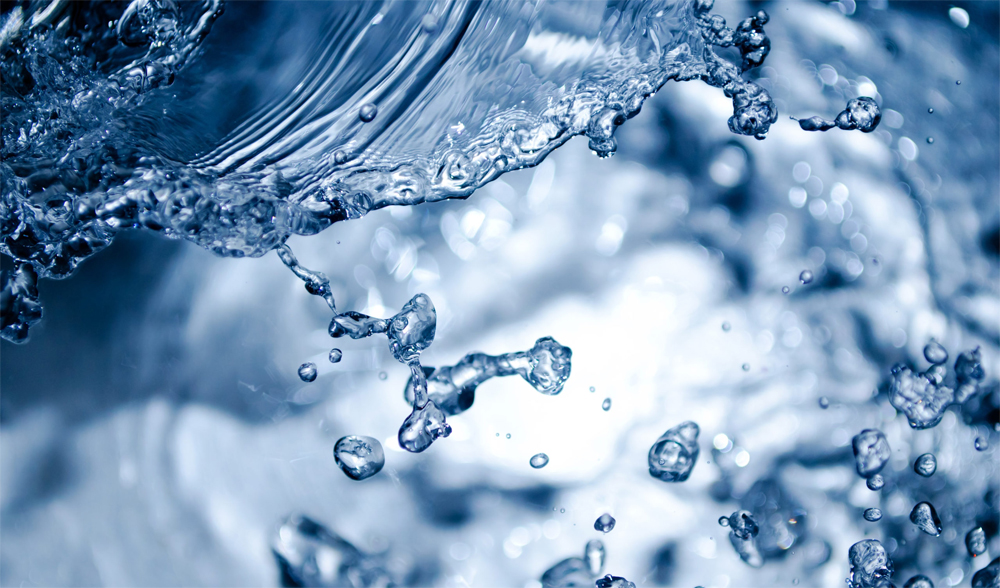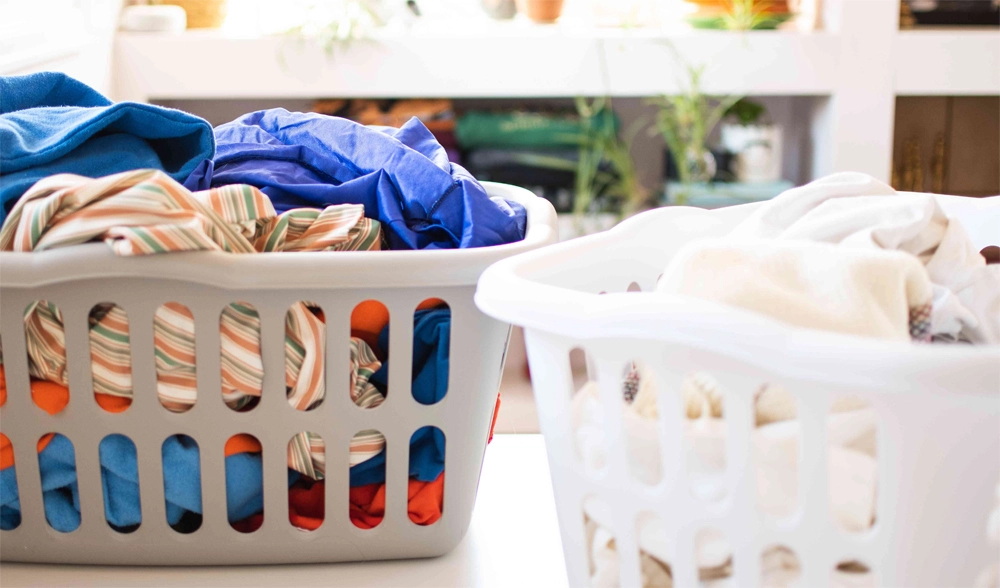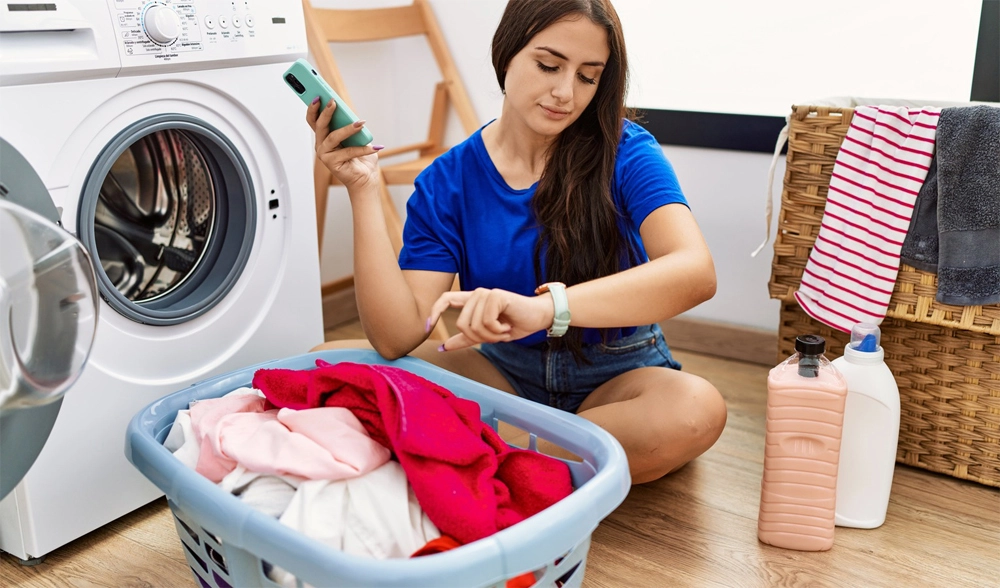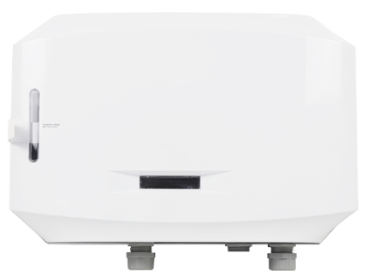
Indeed, ozone acts as an oxidizing agent that might lead to the gradual fading of organic dyes. However, it's essential to recognize that the colors of all laundered and dried garments can naturally diminish with time.
Gas-phase ozone exhibits greater aggressiveness compared to ozone dissolved in water. Certain systems introduce ozone directly into washers, which has occasionally led to washer damage. A notable washing machine manufacturer even nullified warranties when direct ozone systems were utilized. However, over the past fifteen years, there have been no documented instances of washer damage resulting from an indirect ozone laundry system. Additionally, Aqueous Ozone not only effectively cleans your clothes but also eliminates the bacteria responsible for causing unpleasant odors in both your laundry and washing machine.
The Textile Rental Services Association (TRSA) conducted tests several years ago that revealed ozone had a significant weakening effect on linen. However, TRSA employed direct injection of potent ozone gas levels onto the linen. In contrast, our own testing and real-world experience have demonstrated enhanced textile strength through indirect ozone application, contrasting with traditional hot water methods. A number of our clients have managed to halve their expenses for linen replacement (typically achieving a reduction of 20 to 30%). We have successfully utilized ozone on the highest-quality hospitality linens, yielding excellent outcomes.

In the scenario of employing a direct-inject ozone system, the laundry facility might be required to expel the substantial volume of ozone that enters the area (where gaseous ozone is introduced directly into the wash wheel). However, with indirect systems, there's no need for exhaust as long as the laundry has appropriately managed the removal of undissolved ozone prior to its entry into the washer.
Indirect ozone laundry systems (aqueous ozone) involve the dissolution of ozone in water before it enters the washer(s), effectively eliminating any remaining undissolved ozone. This approach empowers users to ensure the system's effective operation and maintain appropriate ozone levels. Furthermore, this design accommodates both large and small washers, streamlining the process by allowing a single system to manage all washers within a laundry. This approach also introduces micro-bubbles that enhance the surface area contact with linens and mitigate off-gas concerns.
Direct injection systems introduce ozone gas directly into the washer. While these systems have shown efficacy for smaller washers (50 lbs), ensuring accurate ozone levels becomes more challenging as washer sizes expand. Unfortunately, these systems lack a mechanism that allows operators to verify proper functionality or ascertain the specific ozone level being applied, if any.
If the odor of ozone is noticeable beyond the laundry area when you are using an ozone laundry system, it indicates that either the system requires repairs or it was originally designed improperly.
Nearly all the chemicals utilized in your laundry carry potential hazards, and ozone deserves comparable caution. If ozone disperses within a laundry room, it possesses the potential to function as a potent oxidant, triggering discomforting symptoms like headaches and nausea that could endure for as long as 48 hours.
Ozone carries a distinctive scent, and an excess of ozone within the laundry is easily detectable. When correctly applied, ozone imparts a pleasant and fresh scent to the linen, which gradually fades during the drying process. Should persistent watery eyes, headaches, and/or nausea arise, it could be indicative of elevated ozone levels. Noticeable extremes in ozone levels are akin to a robust trace of chlorine, immediately noticeable in the sinuses. Reputable ozone providers engineer their systems to ensure that ozone levels remain comfortably within OSHA standards (refer to safety and MSDS for more information).
As previously mentioned, a minimum of 0.5 ppm is essential for ozone laundry. Our ozone laundry system designs aim to provide concentrations ranging from 1 to 2 ppm, with certain applications reaching levels between 2 to 3 ppm.
Count on our ozone laundry system to remain operational for a minimum of 1 decade, free from the need for maintenance or spare parts.

Numerous theories exist, though clarity is yet to be achieved. One hypothesis suggests that ozone's presence leads to fewer compounds remaining on clothes, thereby enhancing water retention. Another aspect involves a decrease in hardness-related problems when using cold water for washing. A more intricate theory delves into the Brownian effect and its impact on water tension in the presence of ozone.
We presented compelling evidence demonstrating that ozone is a highly effective disinfectant when utilized at suitable levels. Because of its instability, ozone can last longer at low temperatures. Therefore, ozone can better play a role when cold water is used for laundry. In fact, ozone ranks among the most potent disinfectants obtainable, a fact corroborated by field data.
Unless employing exceptionally high ozone levels, a practice generally unfeasible in On-Premises Laundry (OPL) setups, combining ozone laundry with bleach is essential. As noted earlier, initiating the action of bleach in cold water necessitates specific ozone concentrations and a carefully controlled pH level.
Your bed linens and towels (room linen) can be laundered using cold water (at room temperature). However, F&B (Food and Beverage) items and rags typically require at least a certain amount of hot water. This is due to the fact that fats and oils present need to attain their melting point, which is generally around 120 °F or lower. Certain ozone laundry systems may employ warm water for all types of linen, primarily serving to infuse the linen with an aqueous ozone fragrance during the final rinse.
Chlorine bleach (sodium hypochlorite) is the more prevalent method. However, in scenarios involving colored linens and healthcare settings, oxygen bleach can be effectively used as an alternative.

To clarify, potential chemical savings can often be achieved by cutting down on unnecessarily extended drying times after using ozone laundry. Nevertheless, we've noticed decreased drying times, particularly in areas with moderate to warm climates. Generally, dryer time reductions typically range from 10% to 30%.
No, ozone functions as an oxidizer that aids in activating your conventional laundry chemicals. While it possesses significant potency, it's essential to maintain perspective – we're employing it at concentrations of 1 to 2 ppm (in contrast, chlorine is utilized at 75 to 150 ppm). Additionally, the roles of laundry detergent chemistry and fabric softeners involve disintegration and elimination of contaminants, which, although ozone might provide assistance, cannot be managed by aqueous ozone alone. If you achieve adequate ozone levels, you could potentially cut costs associated with purchasing chemical laundry detergents, but such considerations fall beyond the scope of typical On-Premises Laundry (OPL) applications.
Ozone laundry has the potential to lower chemical costs, often attributed to excessive product usage before ozone implementation. It's crucial to scale back these excessive amounts to standard levels, as an excess of product tends to work against the efficacy of aqueous ozone.

Green Land Yinghai International Building B,
Baohe District, Hefei,
Anhui, China, 230002
© O₃ Eco Laundry 2024 | Sitemap | Privacy Policy | Terms of Service